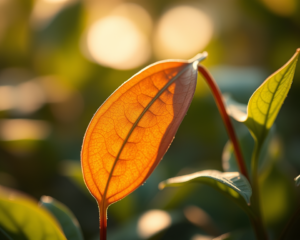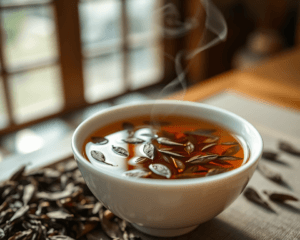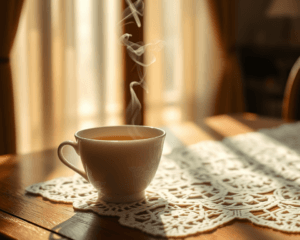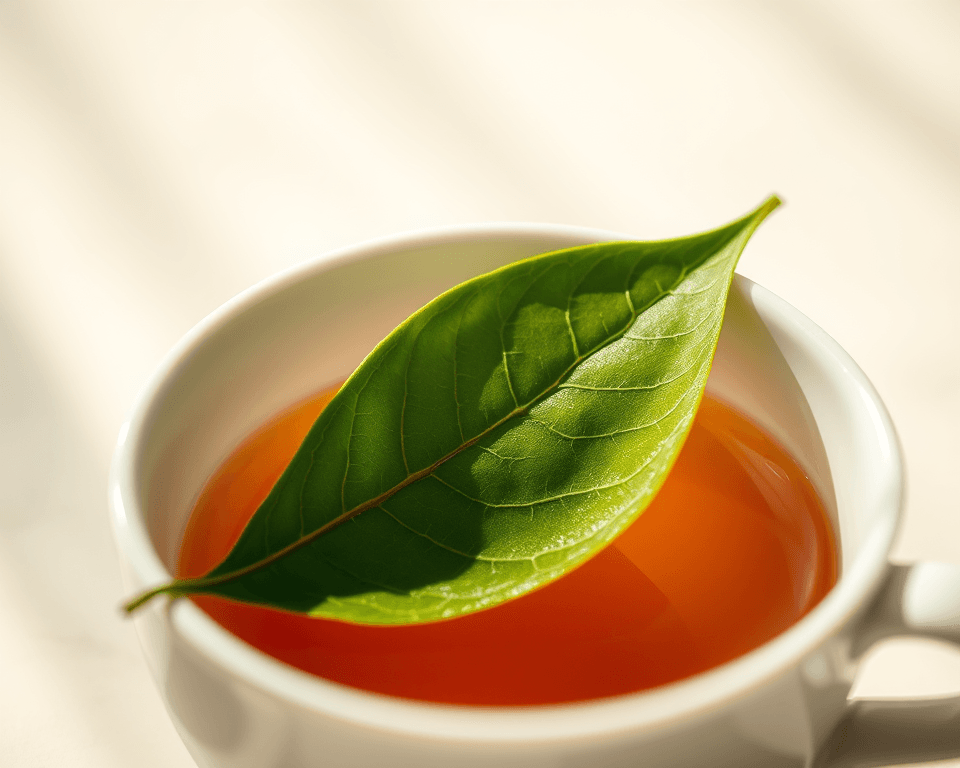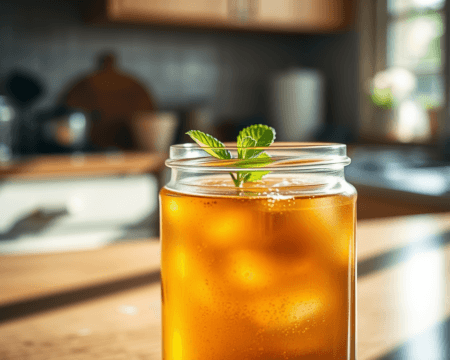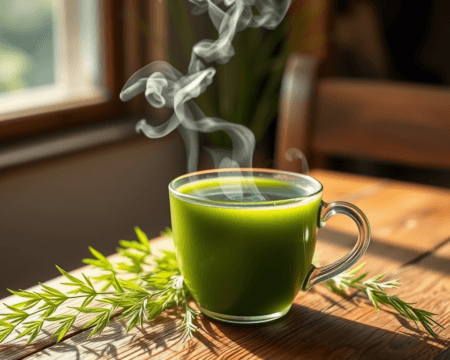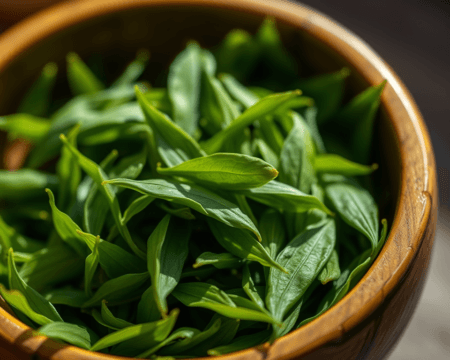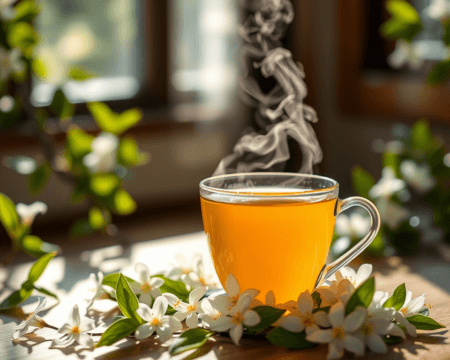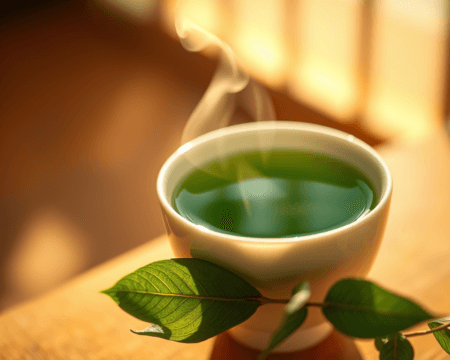Ever looked at a cup of tea and thought, “What’s the deal with the color of these leaves?” Trust me, you’re not alone. The hue of tea leaves isn’t just a pretty detail; it actually tells a powerful story about what you’re about to sip. From luscious greens to earthy browns, the colors of tea leaves offer vital clues about their quality, flavor, and even potential health benefits. After all, tea isn’t just a drink; it’s a sensory experience.
Key Takeaways
- The color of tea leaves significantly impacts both flavor profiles and health benefits.
- Different tea types—like green, black, and oolong—each possess unique visual characteristics and flavor expectations.
- Understanding leaf color can enhance your brewing techniques, ultimately leading to a more enjoyable cup of tea.
- The interplay of terroir and processing methods shapes not only the color but also the overall quality of your tea.
Introduction to Tea Leaf Colors
The Importance of Color in Tea
When I first got into tea, I thought it was all about steeping and sipping. But boy, was I wrong! The color of tea leaves plays a crucial role in all aspects of the tea experience, from how they look to how they taste. Those leafy greens or dark browns? They’re not just random shades; they’re indicators of the type of tea and even its quality. Did you know that the vibrant green of a matcha leaf tells you about its delicate processing and nutrient-rich goodness? Or that the deep amber of a black tea is synonymous with bold flavors and rich aromas?
Visual appeal isn’t just for Instagram; it’s a gateway to understanding what you’re drinking. Colors can signal freshness, oxidation levels, and even the type of soil the tea was grown in. So, getting familiar with these hues can undoubtedly enhance your sensory experience.
Overview of Different Tea Leaf Colors
Common Colors of Tea Leaves and Their Types
Alright, let’s break it down. Here’s where it gets really interesting. The world of tea leaf colors is like a painter’s palette, filled with a variety of hues that correspond to different tea types.
Green Tea: These leaves are usually a bright yellow-green color – think fresh spring grasses. They’re minimally oxidized, which means they maintain a lot of their natural nutrients. Varieties like Sencha or matcha are vibrant green and offer a slightly grassy flavor.
Black Tea: The deep, dark leaves of black tea are often a rich mahogany or chocolate brown. These leaves undergo full oxidation, resulting in bold flavors. Classic examples include Darjeeling and Assam, each boasting its own unique profile.
Oolong Tea: This one’s a middle ground. The leaves can range from a light green to a dark brown, depending on the oxidation process. A good Oolong like Tieguanyin showcases beautiful green hues with floral notes.
White Tea: Often light and soft, these leaves appear nearly silver or pale green. They’re the least processed, using only young buds and leaves. Silver Needle, a high-quality white tea, is renowned for its delicate flavor profile.
Herbal Tea: Now, this is where it can get a little funky. Herbal teas aren’t “true” teas as they don’t come from the Camellia sinensis plant, but their leaves can be vividly colored, ranging from the deep reds of hibiscus to the light greens of lemongrass.
Want a quick comparison? Here’s a snapshot of these tea types:
| Tea Type | Leaf Color | Processing | Flavor Profile |
|---|---|---|---|
| Green | Bright yellow-green | Minimally oxidized | Grassy, vegetal |
| Black | Dark mahogany | Fully oxidized | Robust, malty |
| Oolong | Variation of hues | Partially oxidized | Complex, floral |
| White | Pale silver-green | Least processed, young buds | Light, delicate |
| Herbal | Vivid colors | Varies widely | Diverse, aromatic |
Visual Examples of Tea Leaf Colors
If you want to appreciate tea’s wide color spectrum, look no further than a good tea color guide or even a well-curated Instagram feed. Images can dramatically enhance your understanding. When you see side-by-side comparisons, the color variations pop, and it becomes easier to identify different types.
Visual identification is key, especially for beginner tea enthusiasts. You’ll start to notice the nuances that speak volumes about the specific varieties and their brewing characteristics. Next time you grab a tea bag or loose leaf, take a moment to observe those colors—don’t rush right to the kettle!
The Relationship Between Leaf Color and Tea Quality
How Color Influences Flavor and Aroma
Now let’s talk flavor. Ever had a black tea with a surprisingly weak taste? Lackluster, right? The color can be a dead giveaway. Darker leaves typically pack a more intense flavor punch compared to their lighter counterparts. The oxidation process is responsible for transforming that green leaf into a robust brown.
Higher-quality teas often present a vibrant color due to fresh, intact leaves. If you purchase a pouch of teabags, flip it over and give it a look—do the leaves look sad and crushed? You might want to re-evaluate your tea selection. A well-crafted loose-leaf tea, like a high-grade Japanese Gyokuro, will not only display a brilliant green but also promise rich umami flavors and a delightful aroma.
Health Benefits Linked to Tea Leaf Color
Alright, let’s not forget about health! The color of tea leaves correlates to their health benefits. Green tea, for example, is lauded for its antioxidants called catechins, visible in those vibrant green leaves. Studies suggest this could aid in weight loss and improve brain functions.
On the other hand, the darker leaves of black tea are filled with theaflavins, which offer cardiovascular benefits. Many herbal teas, filled with colorful botanicals, also come with their unique health perks—like chamomile for calming or hibiscus for lowering blood pressure.
Here’s a quick insight into the benefits associated with various tea leaf colors:
| Leaf Color | Health Benefits |
|---|---|
| Bright green (green tea) | High in antioxidants, may boost metabolism |
| Dark brown (black tea) | Supports heart health, rich in theaflavins |
| Mixed hues (oolong) | Potential weight management benefits |
| Pale green (white) | Rich in polyphenols, may enhance skin health |
| Vivid colors (herbal) | Varies but includes calming and wellness benefits |
Exploring the Science Behind Tea Leaf Color
Terroir and Its Impact on Tea Leaf Color
Here comes the good stuff—terroir. It’s not just for wine! The term refers to how the land, soil composition, and climate all influence the characteristics of tea leaves. Think of it like this: a tea plant grown in the misty mountains of China is going to have a radically different profile than one grown under the blazing sun in India.
Conditions like temperature, rainfall, and even altitude play a role in the coloring of tea leaves. Each tea region—be it the fragrant climes of Sri Lanka or the highlands of Taiwan—contributes unique flavors and colors thanks to their farming practices. So, when you’re sipping on that bright green Gyokuro, remember, the lush landscapes of Japan and the meticulous farming methods created that experience.
The Role of Processing in Determining Tea Leaf Color
Processing, my friend, is where the magic happens. The way tea leaves are handled—from oxidizing to drying—can dramatically shift their color. With green tea, the leaves are quickly steamed or pan-dried to maintain their lively color and fresh flavor. Contrast that with black tea, where oxidation is allowed to run its course, resulting in those deep tones.
Take oolong tea as an example. Depending on how long the leaves are oxidized, you can have anything from a light green to a dark, richly colored leaf. It’s fascinating how processes such as rolling, which bruises leaves, also contribute to the rich and complex flavors found in a well-crafted Oolong.
Practical Tips for Identifying Tea by Leaf Color
Color Identification Techniques for Beginners
Let’s get hands-on! First off, get cozy with those leaves. Whether you’re staring at a dry leaf from a gourmet shop or steeping tea at home, take note. Look closely at the texture, the break of the leaf, and yes—the color! You’ll learn to differentiate between types as you experience a variety of teas.
Being able to identify leaf features is a skill that can elevate your tea appreciation. You’re not just drinking; you’re practicing an art. I recommend attending a tea tasting workshop or two. It’s a great way to immerse yourself in the world of tea with fellow enthusiasts, plus you get to sip your way through learning.
Brewing Recommendations Based on Leaf Color
Brewing isn’t just about how long you steep; it should also factor in the color of your tea leaves. Here’s the deal: lighter-colored teas, such as green or white, usually require cooler water (think around 160°F to 180°F) and shorter steeping times (about 2-3 minutes). Darker varieties like black tea or heavy Oolongs, however, thrive at boiling temperatures and can steep longer, anywhere from 4-6 minutes.
This simple tip can make a monumental difference in unlocking flavors. Imagine unlocking a hidden gem waiting within those colorful leaves. A tea that could’ve been shy turns into an explosion of flavor just by adjusting your steeping methods.
You’re ready to explore the vibrant world of tea leaf colors! Whether you’re an eager novice or a seasoned aficionado, mastering these hues will enhance your tea journey in ways you might not have imagined. The next time you brew up a cup, take a second to admire those leaves. You’re not just sipping; you’re experiencing a history, a culture, and a science that’s as rich as the colors themselves. Happy brewing!
Frequently Asked Questions
How does the color of tea leaves affect flavor?
The color of tea leaves strongly influences the flavor due to the specific compounds present in different types of tea. For instance, green tea leaves, which are less oxidized, tend to have a more delicate, grassy flavor, whereas black tea leaves are fully oxidized, resulting in a bolder and more robust taste.
What are the health benefits of different tea colors?
Different tea types offer various health benefits depending on their processing and leaf color. Green tea is rich in antioxidants and known for its calming effects, while black tea may aid in heart health and improve gut function. Oolong tea can enhance metabolism and contribute to weight management.
Can I mix different types of tea?
Yes, mixing different types of tea can create unique flavor combinations. However, take care to choose teas with complementary flavor profiles and aromas to enhance your overall drinking experience. Experimenting with blends can also bring out the beneficial properties of various teas.
What is terroir, and how does it affect tea?
Terroir refers to the environmental conditions where the tea is grown, such as climate, soil, and altitude. These factors influence the tea’s flavor, aroma, and quality, ultimately affecting the leaf color and health benefits. Understanding terroir helps you appreciate the nuances in different tea types.
How do processing methods impact tea color?
Processing methods, such as oxidation, rolling, and drying, play a critical role in determining the color of tea leaves. For example, the oxidation process transforms green tea into black tea by darkening the leaves and changing their chemical composition, which ultimately alters the flavor profile.
What are the best brewing techniques for different tea types?
Brewing techniques vary by tea type. For green tea, use cooler water (around 175°F) and steep for 2-3 minutes. For black tea, boiling water (around 200-212°F) is ideal, with a steeper time of 3-5 minutes. Oolong tea typically requires slightly cooler water and a longer steeping time for optimal flavor.
How can I store tea leaves to maintain their quality?
To keep tea leaves fresh, store them in an airtight container away from light, moisture, and strong odors. A cool, dark place, like a pantry or cupboard, is ideal. Proper storage extends the life of your tea and preserves its flavor and health benefits.
Are there any side effects of drinking tea?
While tea has numerous health benefits, excessive consumption can lead to side effects. Caffeine sensitivity varies, and too much tea may cause insomnia, jitters, or digestive issues. Moderation is key; typically, 2-4 cups per day is considered beneficial for most people.
Can I drink tea if I’m sensitive to caffeine?
Yes, there are many caffeine-free herbal teas that offer a variety of flavors and health benefits without containing caffeine. Options such as chamomile, rooibos, and peppermint are great choices for those who want to avoid caffeine while still enjoying a comforting beverage.
